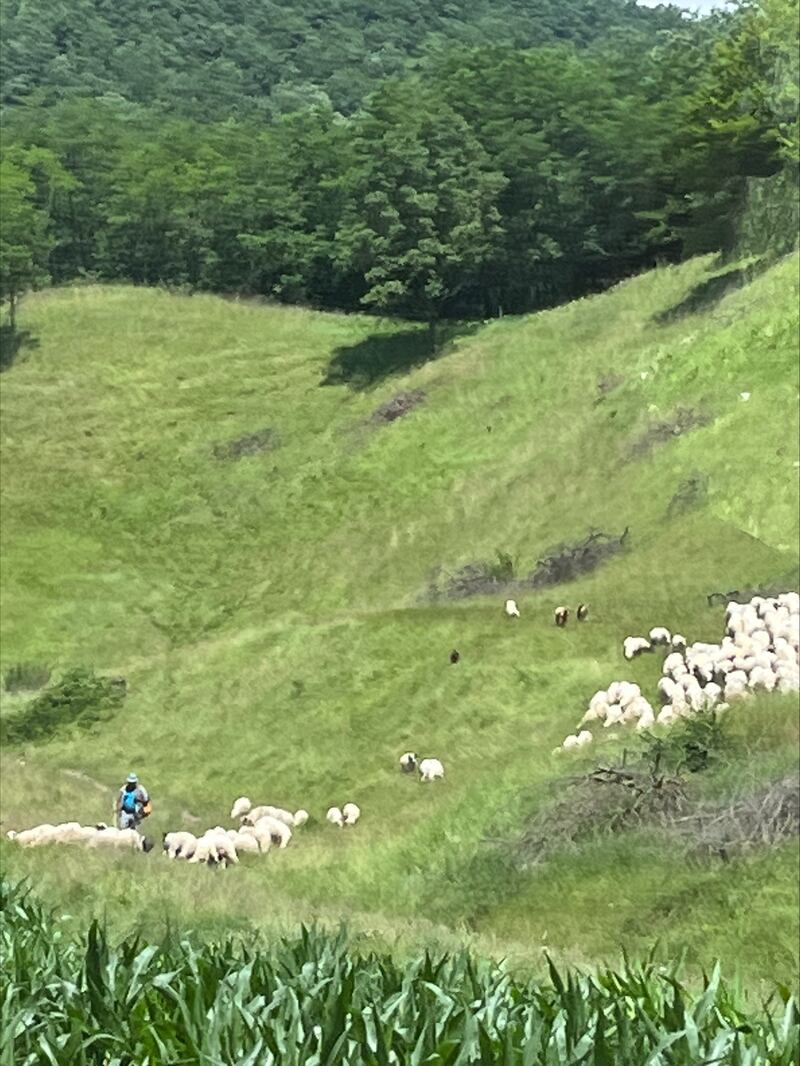One of the revelations of my recent tour of Transylvania was learning that the UK’s newly crowned monarch, King Charles, is a direct descendant of Vlad the Impaler (c1428-c1477).
The locals are quite proud of this, as is he. Acknowledging the link during a Romanian visit, with a nod to his ancestor’s supposed role in inspiring the Dracula legend, the then Prince Charles joked that he had “a stake in the country”.
This may have come as no surprise to English taxpayers, especially republican ones, some of whom might like to have a stake in him.
But it should be noted that, for all the impaling, Vlad III (he and King Charles share a numeric too) is a folk hero in Romania for his feats in defending the country against the Ottoman Empire.
READ MORE
One local tour guide told us that Vlad’s notoriety was partly the work of his public relations department, who exaggerated the cruelty to frighten Turks. As for suggestions that he drank blood, that seems to have been a rumour invented by Transylvania’s Saxon settlers, whose villages Vlad had a habit of plundering.
In any case, the name Dracul, which was first appended to his father, Vlad II, means only “Dragon”, after a chivalric order to which he belonged. It seems to have been meant as a compliment. “Dracula” was the derivative version, applied to his sons.
The blood relation thing aside, King Charles is said to have fallen in love with Romania because of its still-unspoilt countryside, awash with flora and fauna that have disappeared elsewhere.
He owns a house in Transylvania and in the nearby, picturesque village of Viscri patronises a museum and training centre devoted to traditional crafts. Among the photographs on display there is one of him feeding chickens, albeit in clothes that would be more appropriate to the Chelsea Flower Show.
The mostly gravel main street of Viscri is also generously accessorised with cow pats, as are the streets of many Transylvanian villages.
Driving home one evening, we had to negotiate several of the pastoral passaggios in which a whole community’s cows (and goats, and water buffaloes) return from the pastures to their night quarters.
A few farmers on foot or horseback direct the operations but there is minimum of supervision. The cows all know where they live and as if saying “this is me here – see you all tomorrow”, they turn off from the main herd as appropriate.
Out on the hills at least, sheep require closer attention. Every flock here has a shepherd, complete with crook – or big stick anyway – to guard them against some of the aforementioned fauna, which includes wolves, wild dogs and bears.

Another of the great sights of Transylvania are storks’ nests. These are astonishing feats of engineering, perched precariously on the highest available spots in a locality: treetops, chimneys and even electricity poles, but spreading far beyond their bases on every side, in defiance of gravity.
Even where there are no nests yet, there is often an individual stork on a pole-top, lording it over the neighbourhood, usually on one leg. They never miscalculate and fall off, apparently, although alas, their young do sometimes get electrocuted.
The nests seemed to be everywhere last week. But then that’s because we visited a series of Saxon villages. And the storks like to settle where the Saxons did, on good farmland near forests (for the supply of firewood/nest material), and remote from cities.
As a result, according to one local expert, every Saxon village has at least five pairs of breeding storks, busy raising homes and families from late March onwards.
Technological progress – including electricity – is a threat, but far from an existential one, yet. It’s still not unusual to see horses and carts on the back roads of Transylvania, at least in and around the Gypsy villages. And farming is freer of pesticides than elsewhere, as the fields full of wildflowers testify.
Even so, however slowly, the march of modernity continues. In the village where we stayed, Arpasu de Sus (as in Irish, almost, “sus” means “upper”), the communal cow-walk no longer happens, to the regret of our hosts, an Irish-Romanian couple for whom this is a retreat from their professional lives in Hong Kong.
The nearby Carpathians, meanwhile, are being rendered more accessible by car paths. A local road leading towards the mountains was until recently gravel-covered. Now it’s EU-funded tarmac, although a stork still occupies a pole-top at the junction, as yet untroubled by the traffic.















